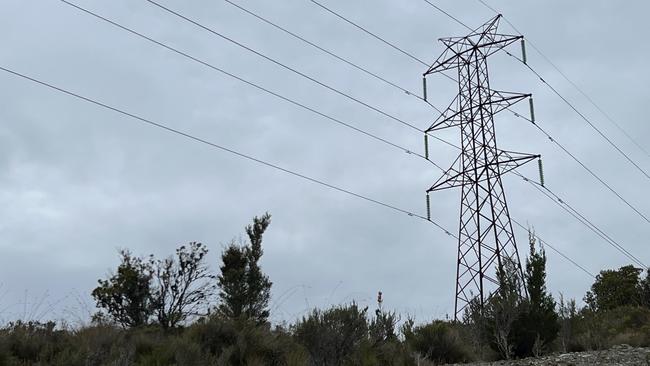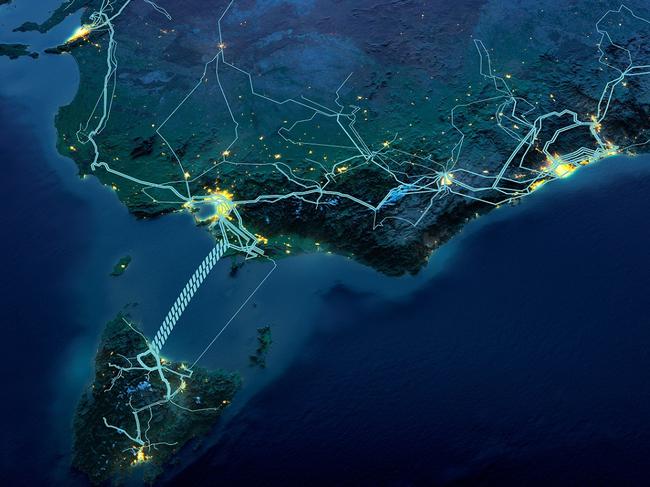Transmission lines years behind schedule adding to blackout risk, says Nexa Advisory
Transmission line projects are running years behind their initial timetable, with the slow pace of development sharpening the risk of blackouts and price rises.

Transmission line projects are running years behind their initial timetable despite pledges by the federal government to kickstart works, with the slow pace of development sharpening the risk of blackouts and price rises, a report has found.
The Albanese government has staked a more than doubling of renewable energy supply by 2030 on a mammoth rollout of transmission projects to delivery more green electricity to households.
However, project updates show that all but one transmission line development has experienced delays, with Victoria suffering the biggest issues, analysis from consultancy Nexa Advisory shows.
The average slippage on transmission projects across the power grid has ballooned to three years, raising fresh concern over Labor’s ability to meet its targets this decade.
Projects in Victoria on average are four years behind their initial timetable, with South Australia the best-performing state. Even there, projects are running a year behind what had been initially envisaged.
The delays come despite Labor spending $20bn on its Rewiring the Nation Fund that offers developers cheap finance and loans to accelerate work, a policy that Labor vowed would deliver the transition and save households almost $300 a year in power bills.
Community opposition and regulatory red tape were named as the biggest obstacles to delivering the giant projects on schedule.
Nexa Advisory chief executive Stephanie Bashir, a former AGL Energy executive, said projects were languishing and urgent action was needed.
“The time for Band-Aids and comfortable compromises is over – nationally significant projects cannot languish in planning and regulatory processes that are not fit for purpose. We have to forge a way forward urgently,” Ms Bashir said.
“Getting on with building transmission is the key. We need leaders to have ambition and make tough decisions.
“We need accountability, co-ordination and rigour. And we need to get on with it.”
Nexa said the Australian Energy Market Operator must identify the market benefit and cost specifically driven by delays to the completion of projects, and called for national co-ordination with state schemes and targets and better engagement with communities hosting transmission lines.
The setback follows analysis by The Australian that almost 20 per cent of Australia’s most advanced renewable energy developments, with a combined capacity larger than the country’s biggest coal power station, have experienced delays within the past year.

Not all transmission lines have received federal government funding, and the onus on delivering transmission lines is inherently the responsibility of states, federal Labor sources insist.
However, some rural voters are vehemently opposed to new transmission lines across their properties or neighbours and have vowed to reject any compensation offer.
In a bid to secure landowner approval, states have steadily increased their financial sweeteners.
Queensland has taken the most aggressive approach, offering landowners who host energy transmission infrastructure funding linked to the toll on the value and the use of their property. Neighbours will also be eligible for compensation.
The payments will be led by Powerlink, the state-owned transmission system operator, which said average payments will be substantially higher than those offered by Victoria and NSW, which have offered landowners $200,000 for every kilometre of land crossed by a major infrastructure project.

The findings will heighten concerns about Australia’s capacity to deliver its energy transition amid concerns that it could be forced to prolong the use of coal to prevent price increases, which would undercut the country’s capacity to meet carbon emission reduction targets.
Transmission is shaping as the biggest impediment to the transition to zero emission sources. Australia must deliver about 10,000km of high voltage transmission lines by 2050 to connect new renewable energy generations to replace retiring coal power stations and meet a growing demand for electrification – but works have been hindered by pockets of community opposition and planning bottlenecks.
Developers have used the funds to pre-order large components that they hope will avoid fresh hold-ups amid a global push for transmission line parts as the world moves to connect new renewable energy projects.
Ms Bashir said the fund had successfully kickstarted works that would have otherwise languished, notably the Marinus Link, which would connect Tasmania’s northwest and Victoria’s Latrobe Valley and is set for completion by 2031.






To join the conversation, please log in. Don't have an account? Register
Join the conversation, you are commenting as Logout